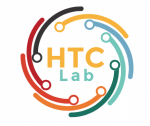In recent years, machine learning (ML) has come to rely more heavily on crowdworkers, both for building bigger datasets and for addressing research questions requiring human interaction or judgment. Owing to the diverse tasks performed by crowdworkers, and the myriad ways the resulting datasets are used, it can be difficult to determine when these individuals are best thought of as workers, versus as human subjects. These difficulties are compounded by conflicting policies, with some institutions and researchers treating all ML crowdwork as human subjects research, and other institutions holding that ML crowdworkers rarely constitute human subjects. Additionally, few ML papers involving crowdwork mention IRB oversight, raising the prospect that many might not be in compliance with ethical and regulatory requirements. In this paper, we focus on research in natural language processing to investigate the appropriate designation of crowdsourcing studies and the unique challenges that ML research poses for research oversight. Crucially, under the U.S. Common Rule, these judgments hinge on determinations of “aboutness”, both whom (or what) the collected data is about and whom (or what) the analysis is about. We highlight two challenges posed by ML: (1) the same set of workers can serve multiple roles and provide many sorts of information; and (2) compared to the life sciences and social sciences, ML research tends to embrace a dynamic workflow, where research questions are seldom stated ex ante and data sharing opens the door for future studies to ask questions about different targets from the original study. In particular, our analysis exposes a potential loophole in the Common Rule, where researchers can elude research ethics oversight by splitting data collection and analysis into distinct studies. We offer several policy recommendations to address these concerns.
Latest posts by Ryan Watkins (see all)
- Automatic Large Language Models Creation of Interactive Learning Lessons - June 29, 2025
- AI as Governance - June 29, 2025
- A Systematic Review of Human-AI Co-Creativity - June 27, 2025
